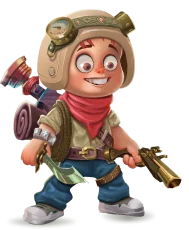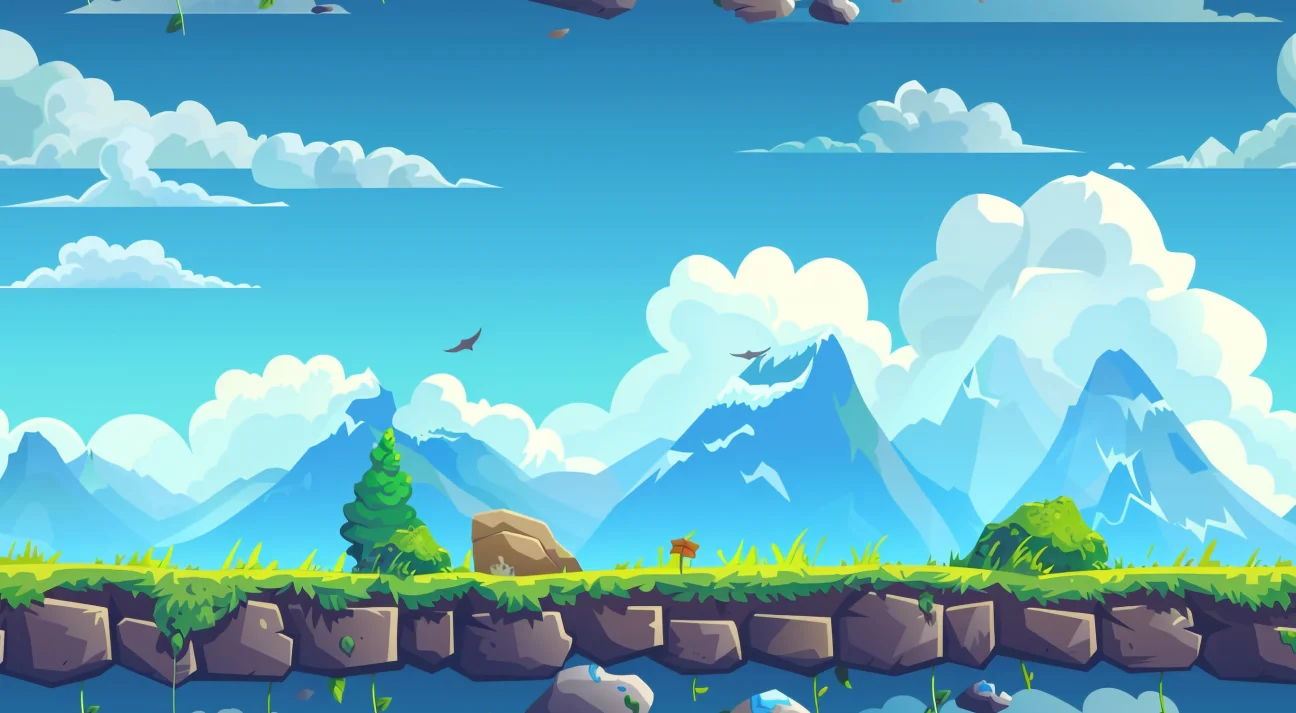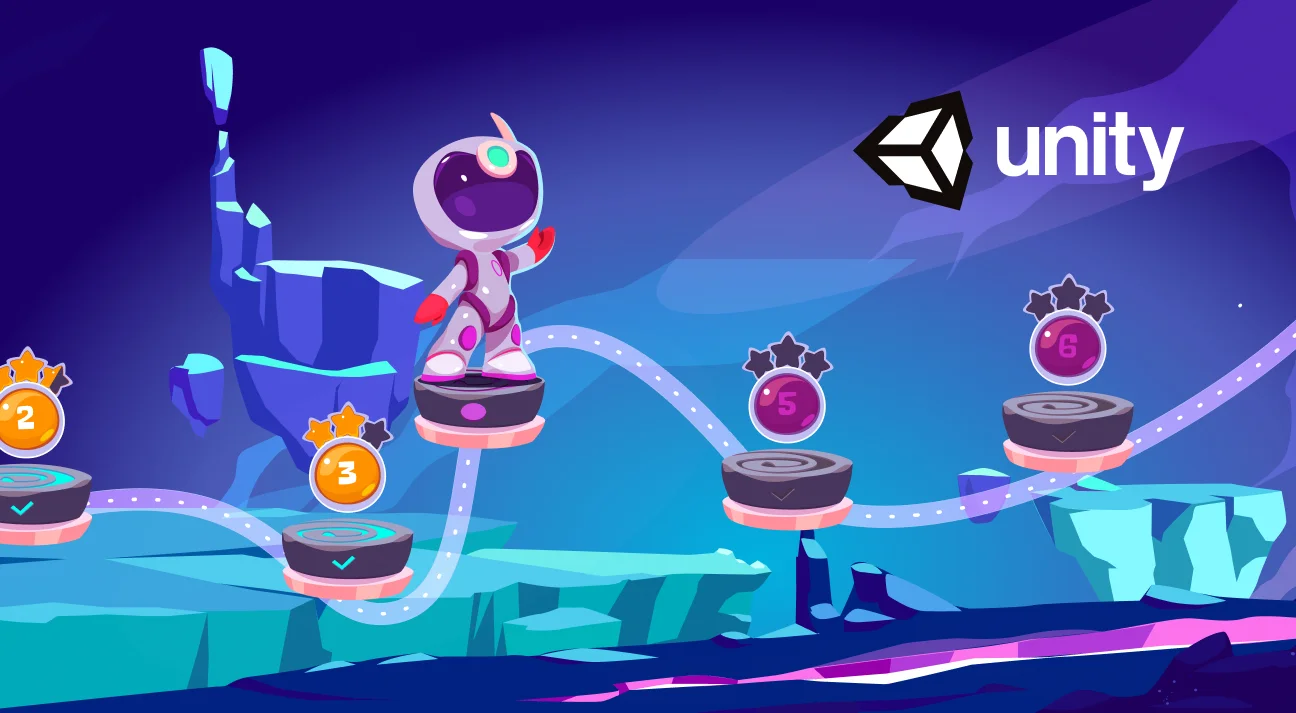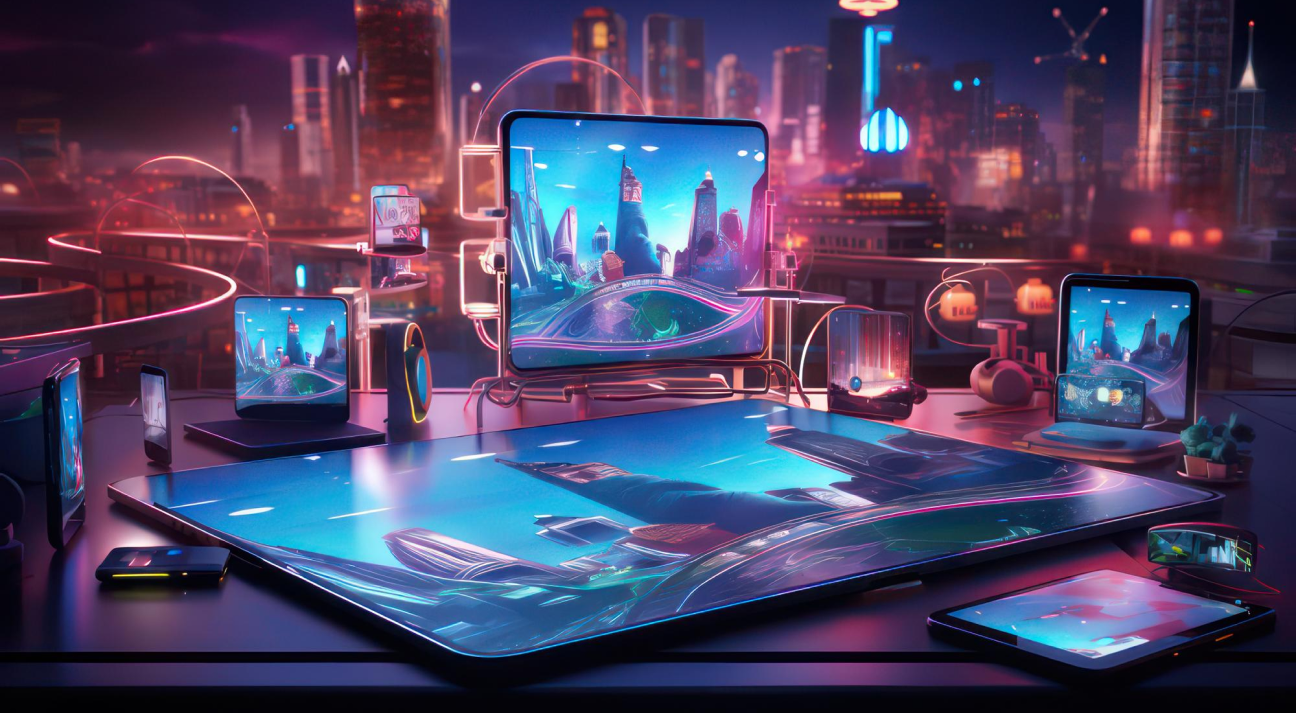
Cross-Platform Game Development: What You Need to Know?
The increase in the variety of gaming hardware and the players’ interest in experiencing their favorite games across various platforms or screen sizes has raised the popularity of cross-platform games.
For gaming entrepreneurs or startup owners, it is a bright revenue generation opportunity as they can target players from various device segments like mobile, PC, console, and more for a single game. Consider mobile gaming alone, here are some amazing market size figures that the gaming entrepreneurs can leverage.
According to Precedence Research, the global mobile gaming market size is expected to hit around 775.69 billion USD by 2032, growing at a remarkable CAGR of 15.5% during the forecast period 2023 to 2032.
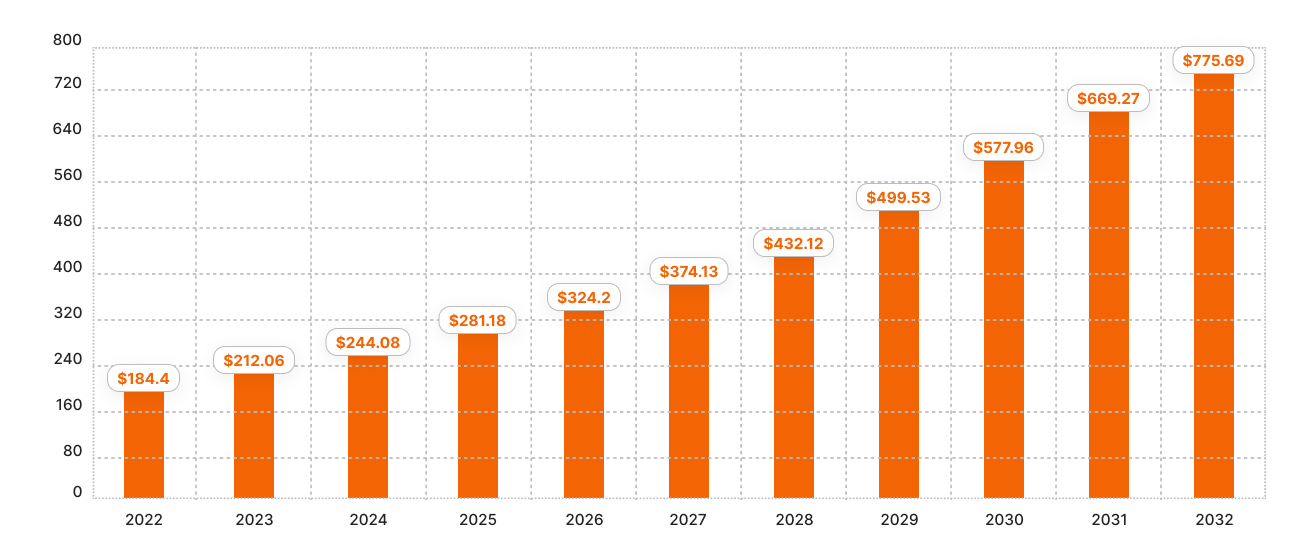
Similarly, in a PC games industry perspective by Zion Market Research, the PC games market size is predicted to grow to around USD 32.11 billion by 2030 with a compound annual growth rate (CAGR) of roughly 1.21% between 2023 and 2030.
With cross-platform game development startups, owners can target the various gaming platform markets and avail its benefits in revenue generation.
Before beginning with the cross-platform development stages, let us first have an insight into what it is and what benefits it offers.
- What is cross-platform game development?
- The Benefits of Cross-Platform Game Development
- How are Cross-Platform Games Developed?
- What Challenges Can You Face During Cross-Platform Game Development?
- Best Practices for Successful Cross-Platform Development
- Why Choose 300Mind’s Cross-Platform Expertise?
- FAQs on Cross-Platform Game Development
What is cross-platform game development?
Cross-platform game development means developing games that players can play across multiple platforms or a variety of operating systems and hardware (personal computers, consoles, mobile phones, and more). These games offer the same gaming experience regardless of the device they are using.
This approach is becoming increasingly popular as it allows game developers to reach a broader audience and maximize the game’s potential reach. There are some more benefits of it, let us now explore the benefits of cross-platform game development.
The Benefits of Cross-Platform Game Development
Cross-platform games are designed to work on various devices making the gaming experience more flexible and accessible for game enthusiasts. Here are some benefits that can be availed by players and business owners alike:
1. Increased reach
By creating a game that can run seamlessly on multiple platforms, such as PCs, consoles, and mobile devices, you instantly expand your target audience. Cross-platform development allows you to tap into a broader and more diverse player base, making your game accessible to a wider spectrum of gamers, regardless of their preferred platform.
2. Reduced development costs and time
Unlike native development which involves creating separate versions of a game for various platforms, which can be an expensive and time-consuming process, cross-platform development allows developers to write code once and deploy it across multiple platforms. It eliminates the need for extensive platform-specific modifications.
This streamlined approach not only minimizes development costs but also significantly shortens the time required to bring a game to market.
3. Consistent user experience
The most crucial factors that empower gaming startup owners to retain and attract players are the consistency of gameplay, graphics, and overall performance across multiple platforms such as PCs, consoles, and mobile devices. It can ensure the player’s engagement and satisfaction no matter how they access the game.
4. Improved Accessibility
As cross-platform games run seamlessly on multiple platforms, it allows the players(friends and communities) regardless of the devices to connect and play together. Given the more inclusive gaming experience, entrepreneurs can bridge the gap of limited accessibility.
Now that you are aware of the advantages of cross-platform game development, let us begin with the development process.
How are Cross-Platform Games Developed?
Cross-platform game development is a multi-faceted process that involves several key stages, from initial planning to post-launch maintenance. Here, we have discussed the development stages from the pre-production stage to post-deployment maintenance and support.
1. Pre-Production
This stage involves laying the foundation of the cross-platform game idea to turn it into reality.
Concept and Idea Generation
Begin with setting the direction of the project by building on the cross-platform game idea. In this stage, game designers for hire brainstorm and conceptualize ideas for the game.
Further, this process involves identifying the game’s core concept, its unique selling points(USPs), and the overall project’s vision. It helps the developers establish a clear vision of the game by refining the idea along with considering all technical and creative aspects and constraints.
Target Platforms and Audience
Another important aspect of the production stage as a part of market research is identifying the target audience. For it, you can consider various factors like age groups, gaming preferences, demographics, and more. Knowing your target audience can enable you to tailor the gameplay, graphics, and overall design as per potential players’ preferences.
Further, it can also help you in deciding the target platforms such as PC, console, mobile, or even virtual reality. When defining platform and audience ensure that the game reaches and engages the widest possible audience across various platforms.
Hiring a dedicated game development team
A team of game developers can make or break your game’s success as they play a crucial role in shaping the game’s vision and ensuring it runs smoothly on multiple platforms. However, it is tough to find team members who relate to your game development ideas.
To ensure that you hire the best remote game developers or designers, consider weighing them on various factors like technical skills, portfolio, budget, location, experience, creativity, engagement model, and more.
2. Design and Planning
The design and planning stage in pre-production involves a lot of meetings where the mold is made. From developing the storyline of the game which involves the characters, their backstory, and the relation between characters, to connecting all the dots ensuring that the entire game storytelling makes sense.
Once the story is crafted, it is time to have a meeting with the game artists and designers to bring life to the characters of the storyline. This step involves defining the design elements of the gaming environment. The UI UX designers work on platform-specific design elements. Also, become aware of the technical constraints that may either affect the gameplay or even end up in a game crash.
The most crucial aspect of this step is designing the in-game mechanics which involves physics and how the characters will move/render on the player’s screen. As the way character and environment sync with each other creating the visual impact you want to offer you game enthusiasts will have a substantial impact on user engagement.
3. Development
It’s time to bring the in-game content to life!
Art and Asset Creation
Once the mold is ready, it is time to create the in-game characters, environment, and assets. From game artists creating the character models, environment, and other game assets to level designers working on crafting gameplay levels, and more, the production stage entails bringing the visual aspects of the game to life.
Audio Integration
Without the sound effects(background music, sound effects, voiceovers, and spatial audio) to the character motion and gameplay, the visual impact is incomplete. This is where the audio engine designers infuse the sounds into the gameplay.
When integrating the audio into the gameplay, one of the major challenges for audio engineers is to ensure that the auditory experience is consistent and engaging on all target platforms, be it PC, console, mobile, or more.
Programming and Coding
Apart from the game’s visual/creative part, the game developer has to bring the game’s core functionality and features to life. Though coding is a lot of work, choosing cross-platform development provides an added benefit of code reusability across platforms saving the game developers’ time and effort in writing the code individually for each game development platform.
The game engines that provide support for multiple platforms are Unreal Engine, Unity, Gadot, and CryEngine. The game developer can also consider cross-platform technology to overcome the hardware and platform-specific technical constraints.
4. Quality Assurance
Glitches, bugs, and performance issues are any game developer’s worst nightmare as it would impact the whole gaming experience of the players especially when the developer has the pressure to keep the user experience consistent across many platforms.
Glitches like a car passing through a tree or solid surfaces instead of colliding would impact the authenticity/realism of the in-game objects/assets and the gamer’s engagement.
Apart from testing the technical aspects of the game for bugs, giving limited players/focus group access to the pre-released version(beta version) of the game would enable the game developer to get a realistic take on the gameplay/gaming experience of the real-world players to improve the game before it is launched for the target users.
5. Deployment and Distribution
Once the game developers have optimized the game’s performance, graphics, and controls to ensure a consistent and enjoyable experience on all target platforms it’s time for the game’s release. The only challenge now is to adhere to platform-specific guidelines and regulations, ensuring the game complies with each platform’s standards.
Developers need to package the game for different app stores, such as Google Play, Apple App Store, and various PC platforms. While doing so developers must navigate the specific requirements and policies of each platform, such as submission guidelines and content restrictions.
6. Maintenance and Support
But the journey doesn’t end there; it is crucial to ensure that the game remains functional and enjoyable for players over time. Effective maintenance and support are vital for sustaining a game’s success and longevity in the competitive gaming industry. This involves regularly releasing updates to fix bugs, enhance performance, and introduce new features.
Cross-platform games especially must adapt to evolving hardware and software changes on multiple platforms, making ongoing support essential to keep the player experience seamless.

What Challenges Can You Face During Cross-Platform Game Development?
It may seem like a smooth roadmap that the game developers can travel easily but there are challenges that may arise when certain technical constraints are not taken into consideration. Let us now go through some of the challenges that you may face during cross-platform game development.
1. Console development is uniquely difficult
Consoles like Xbox, PlayStation, or Nintendo Switch add an extra layer of complexity in cross-platform game development as they have their own specific requirements, development kits, and approval processes.
Unlike the more open and flexible environment of PC development, consoles often have strict guidelines and limitations. The game developers must adapt their code, graphics, and gameplay to meet the console’s standards while ensuring it works on other platforms.
2. Navigating technical restrictions
When creating applications that need to run seamlessly on multiple platforms such as iOS, Android, and web browsers, game developers often face constraints imposed by the specific technologies and frameworks used on each platform.
From hardware capabilities to software architecture, and performance limitations, technical limitations arise from fundamental differences between operating systems and platforms. Cross-platform developers must devise strategies to overcome these technical restrictions to ensure user experience across diverse platforms.
3. Compatibility issues
Often display problems, performance disparities, or functionality issues arise due to variations in operating systems, screen sizes, hardware capabilities, and even browser configurations. Developers even have to write custom codes to overcome the compatibility issue resulting in time consumption.
4. User experience consistency
Differences in platform-specific design guidelines, screen sizes, UI/UX principles, and device capabilities can make it challenging to ensure that users on all platforms enjoy a similar level of quality and satisfaction. It induces user confusion and frustration due to the inconsistencies in user navigation, functionality, and design.
However, the cross-platform frameworks offer a set of rich design tools, UI components, and more that cross-platform game developers can use to overcome this challenge.
Best Practices for Successful Cross-Platform Development
These best practices will empower developers to navigate the complexities of cross-platform development effectively to deliver high-quality products that resonate with a diverse user base.
1. Reuse components
The developers can reduce redundancy and save valuable time and resources by leveraging existing code, UI elements, libraries, and frameworks that can work across multiple platforms. The reuse of components also ensures a uniform user experience across various platforms along with easy code maintenance and updates.
2. Have a unified art style
Given the impact art style has across the platforms different which induces a temptation to infuse variation in the art styles corresponding to the certain platform. Refrain yourself from doing so as it would only add to the platform-specific adjustments increasing the development time and coding complexity.
A unified art style ensures that your project’s graphics, animations, and overall aesthetics remain coherent across different devices or operating systems. This not only enhances the user experience but also simplifies the development process.
3. Choose the right game engine
The choice of the game engine can significantly impact the efficiency and quality of your cross-platform game. With so many game engines available the choice can be tough, however, taking factors like platforms you intend to target (e.g., PC, console, mobile), the scale and complexity of your game, and your team’s familiarity with the engine and more can help you to choose the best-fit game engine for your project.
Some of the best game engines offering cross-platform capabilities are Godot, Unity and Unreal Engine.
4. Modularity and scalability
Ensuring that your game can handle the increase in the number of users and features/functionalities added over time is crucial so that the game does not crash.
Modularity will make it simpler to manage updates and bug fixes, as you can focus on individual modules without impacting the entire codebase. This further enables the use of scalable infrastructure, easy code optimization for performance, and being prepared to adapt to emerging technologies.
5. Plan for platform-specific tweaks
Though cross-platform frameworks and game engines offer substantial code reusability, still each platform has its unique characteristics and requirements. To ensure a seamless user experience, it’s crucial to create a plan for addressing these specific nuances. This involves identifying the unique characteristics, design guidelines, and performance considerations of each target platform.
This proactive approach not only minimizes post-launch issues but also enhances the end-user experience, making it a fundamental aspect of successful cross-platform development.
Why Choose 300Mind’s Cross-Platform Expertise?
With a knack for turning your gaming ideas into reality, 300Mind brings a wealth of experience and expertise to the table, making us the ideal partner for your gaming project.
300Mind offers a team of experienced game developers for hire who are well-versed in the art of creating games that can run smoothly on various devices. What sets our game developers and designers apart is their passion for gaming and commitment to delivering top-notch gaming experiences for players.
Our team knows how to balance cutting-edge technology with creative game design, making sure your game isn’t just functional, but also loads of fun. Contact us today and start building exciting cross-platform games with 300Mind.
FAQs on Cross-Platform Game Development
The cost to hire a game developer can vary widely, depending on the developer’s experience, location, and the complexity of the game. We at 300Mind, offer you flexible hiring models to suit your resource hiring budget. Connect with us to get started with your cross-platform game development project within just two business days.
No, cross-platform is not the same as cross-play. Cross-platform means a game can be played on different types of devices, like PCs, consoles, and mobile. Cross-play, on the other hand, allows players on different devices to play together in the same game.
